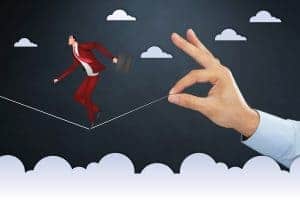As I was scrolling through my twitter feed (@GamificationNat if you want to connect with me there), I came across this question “when does learning happen”? The person who created the tweet, Tanmay Vora (@tnvora) also had an adjoining picture drawn out, which captured a lot of the instances on when we learn. I feel it captures the range of moments of learning very well and even at this it may not be the complete list yet.

In my learning gamification framework I talk about, level 3 proof of learning or mastery of a skill. When you look at these moments when learning happens, some will come as answers to posed questions or the satisfaction of a need. Others will give you a gentle aha moment along the lines of “oh that’s how this works”.
Most of the moments of learning are active either by actively reflecting or actively doing something even if some of the things are more mind than body focused. Learning comes in more that one way and this is what the image clearly illustrates. Our reasons for learning can be equally as diverse, whether they are an in the moment need, based on feedback, curiosity or other drivers such as career advancement or wanting to know what people are talking about when they mention something.
The key in all learning is that the learner is the core decision maker. When does learning happen, when the learner chooses to be open to learning or actively pursues learning. Most children come into the world with a learning mindset, they have everything to gain. They learn from experimenting and feedback and once they are able to speak, they become masters of the “why” question. Typically it takes an active dislike, a fear or a strong belief in something that stops us from learning more. If you have consistently been told you are no good at a particular topic, then eventually the willingness to learn more may wane. If you strongly believe that the world is flat (when you lived in the Middle Ages for example), then any other contradictory information would be challenging your world view and often rejected.
Learning related gamification can stimulate learning to happen for the open minded learner and provide nudges forward for them to reflect, connect the dots, spot the trends etc. For the unwilling learner, it may not be the solution, but merely a vehicle that helps them get started again. Or makes the process less tedious. The openness to learn though is still under the control of the learner. As a trainer I often found my enthusiasm for a topic rubbed off on the learner. The days I struggled were also the days we were tackling things I found harder to share. In training design we looked for actions, feedback loops and reflection opportunity. If you look at games, you will learn new skills as you play, but not all at once, gradually more is being introduced and periods of just practise and reflection are also built in. You could argue losing all your lives in a game is a moment of reflection until they refresh and you start with a new strategy. For casual mobile games this may require little effort, for multi player online games the impact is bigger and may require team input.
In online learning what I see is a lot of the same energy, game play and methods being used, which may only stimulate a fraction of the people we target. So building in challenge, proof of existing skill, levels and nudges to move the learner forward are part of good design.





Thank you so much for adding context around my sketchnote on "When Does Learning Happen", though the sketchnote was only a partial list. You can see the complete blog post at: http://qaspire.com/2016/01/18/when-does-real-learning-happen/
Thanks once again for sharing my work here.
Regards,
Tanmay Vora
@tnvora
Thanks Tanmay, it was a great sketch note. I like the graphical shares on Twitter, hence it caught my attention. Glad that you shared the complete post also. Will keep an eye out for more of your work.
Thanks
An (@GamificationNat)